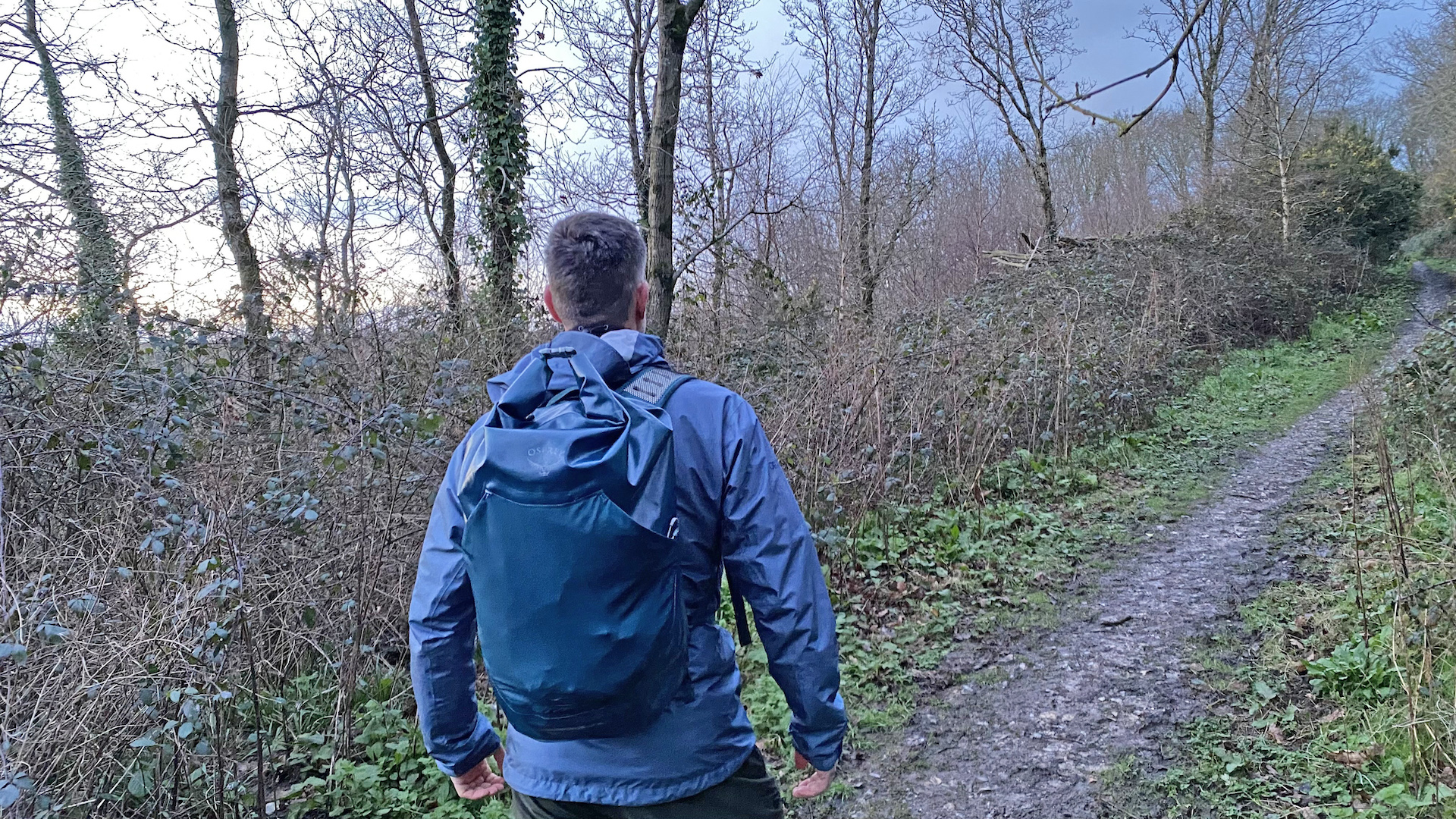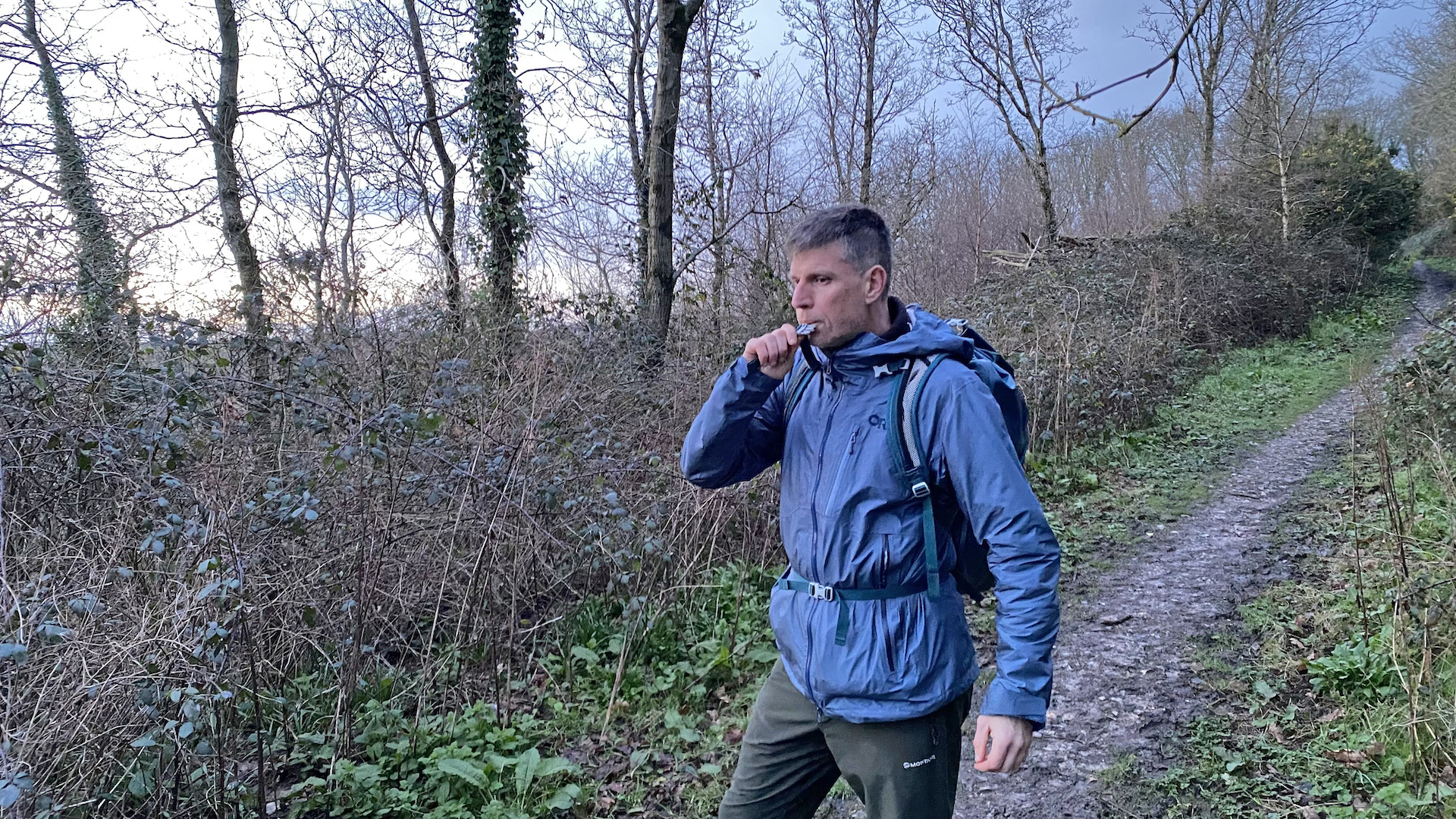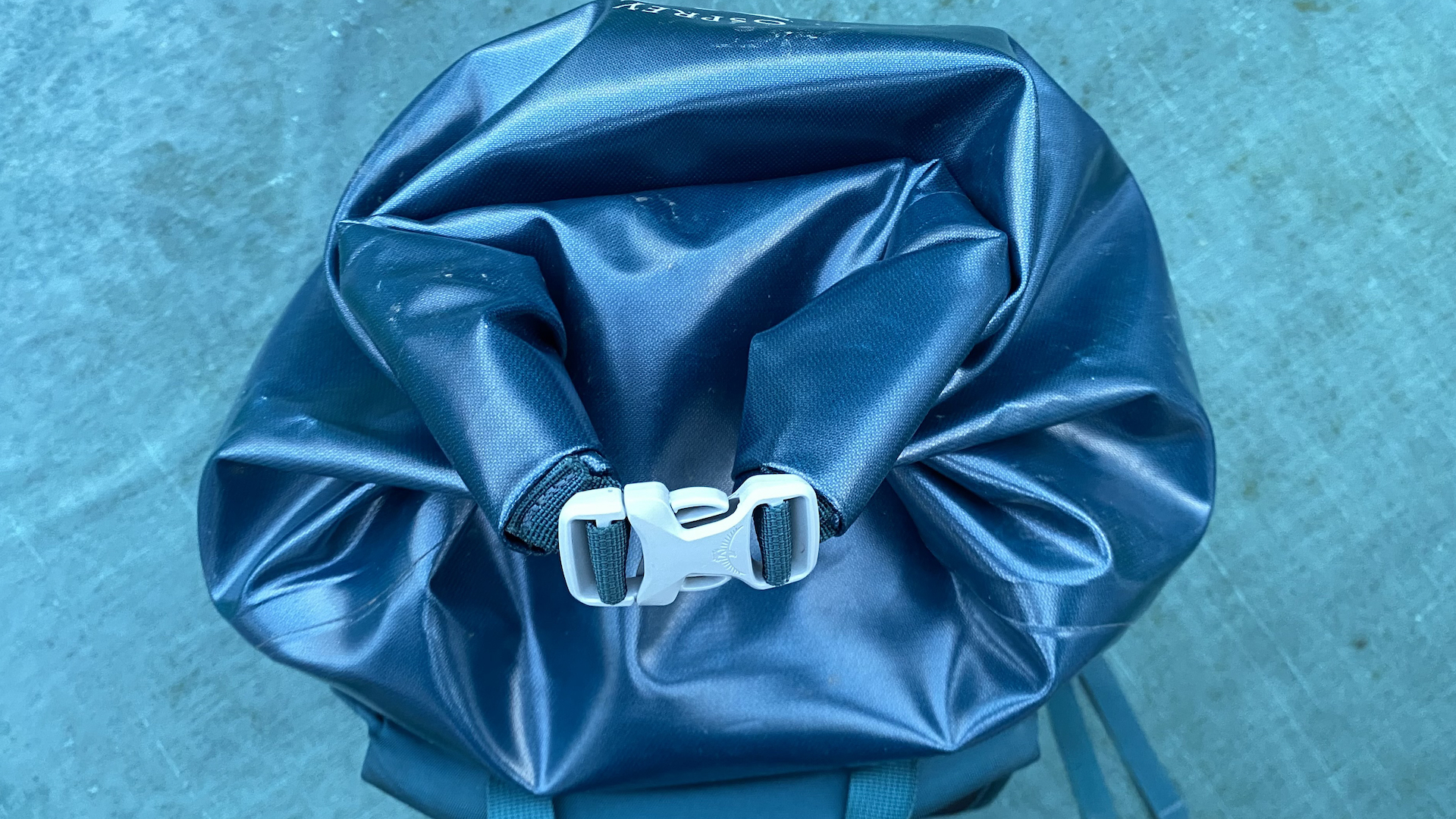
Meet the reviewer
Osprey Transporter Waterproof 30: first impressions
Osprey makes some of the very best hiking backpacks and daypacks around, with the brand’s products justifiably renowned for the quality of their design and construction. True to form, the Transporter Waterproof 30 model boasts a brilliant harness, an easy-to-access main compartment with a huge capacity, and a range of excellent features.
• List price: $190 (US) / £180 (UK)
• Waterproof rating: IPX6
• Weight (empty): 862g / 1.9lb
• Size/Volume: 30L / 1831cu in
• Dimensions (HxWxD): 52cm x 32cm x 24cm / 20.5in x 12.5in x 9.5in
• Material: Bluesign-approved 400D recycled nylon, TPU double coated
• Colors: Black / Night Jungle Blue
• Closure method: Roll-top and clip
One of the frustrations I have with Osprey packs such as the Manta 24 and Mutant 52 however, is that they are never sold with a rain cover, which has to be purchased separately (pretty cheeky I think, especially given how expensive the packs are in the first place). The difference with the Transporter Waterproof 30 pack, is that it doesn’t need a rain cover, because it’s 100% weatherproof all by itself and will keep whatever you put in it completely safe from the elements. It’s basically a high-quality dry bag with a backpack-quality harness.
But can you really have the best of both worlds – the protection of a dry bag and the functionality and comfort of a backpack – without making some compromises? I have been trail testing the pack to find out, and to see how it compares with the best dry bags on the market.
Design and materials
Made from bluesign-approved 400D recycled nylon and double-coated TPU, the main compartment of the Transporter Waterproof 30 works exactly like a dry bag: you fill it up, then roll the top over at least three times before clicking the ends together.
And once it’s securely sealed, the bag is completely weatherproof. Lab-certified as waterproof to IPX6, it can withstand rain coming at it from all directions, no matter how torrential. You can’t confidently submerge it without risking the contents, but I can’t think of a scenario where you’d actually want or need to do that anyway.

The strong materials and robust construction also means the Transporter Waterproof 30 is tough enough to be hauled around canyons, taken coasteering, booted around in the bottom of boats and strapped to standup paddleboards.
It’s not just for full-on adventuring, though. With an internal pouch specifically designed to take a laptop (up to 13in in size) and an internal zipped pocket for smaller, precious items, it can be used for day-to-day carry, or employed as a really reliable weatherproof solution for getting your electronic gear to work during rain-strafed (or even paddle-powered) commutes.
Osprey Transporter Waterproof 30: on the trails and around water

I’ve been testing the Osprey Transporter Waterproof 30 during a range of adventures in all sorts of landscapes and conditions, across all four seasons. Used as a backpack for day hikes in wet weather I found it very comfortable, even when worn for several hours. It boasts a mesh-covered AirScape back panel that allows a breeze to blow between your body and the bag, reducing sweatiness. The mesh-and-foam shoulder straps are well aerated and comfortable too, and although the harness can’t be adjusted, the sternum strap (which features an emergency whistle) can be moved up and down to achieve a comfortable fit.

There’s no capacity for carrying a hydration bladder within this pack, and I did miss this feature. There are no side pockets for water bottles either, but the Transporter Waterproof 30 does have a large front pouch made from super-stretchy material and accessible from either side, which is very accommodating and can be used for stuffing all sorts of things into, from waterproof coats and rain pants to hiking gloves and warm hats. On one side of this pouch there is a secret zipped pocket for stashing valuables.

I’ve also been using this versatile pack during kayaking escapades and adventures on my standup paddleboard. The advantage of the excellent Osprey design in this scenarios is that you can use the bag as a high-standard dry bag while you’re paddling (it’s particularly good for securing a camera in such scenarios), but also load it up and wear it as a backpack during portages or when you have a long walk to get to the put-in point.
Other features include a strong haul handle, reflective graphics for improved visibility at night, and a little material hoop at the bottom of the rear pouch that you can attach a light to for extra safety.







